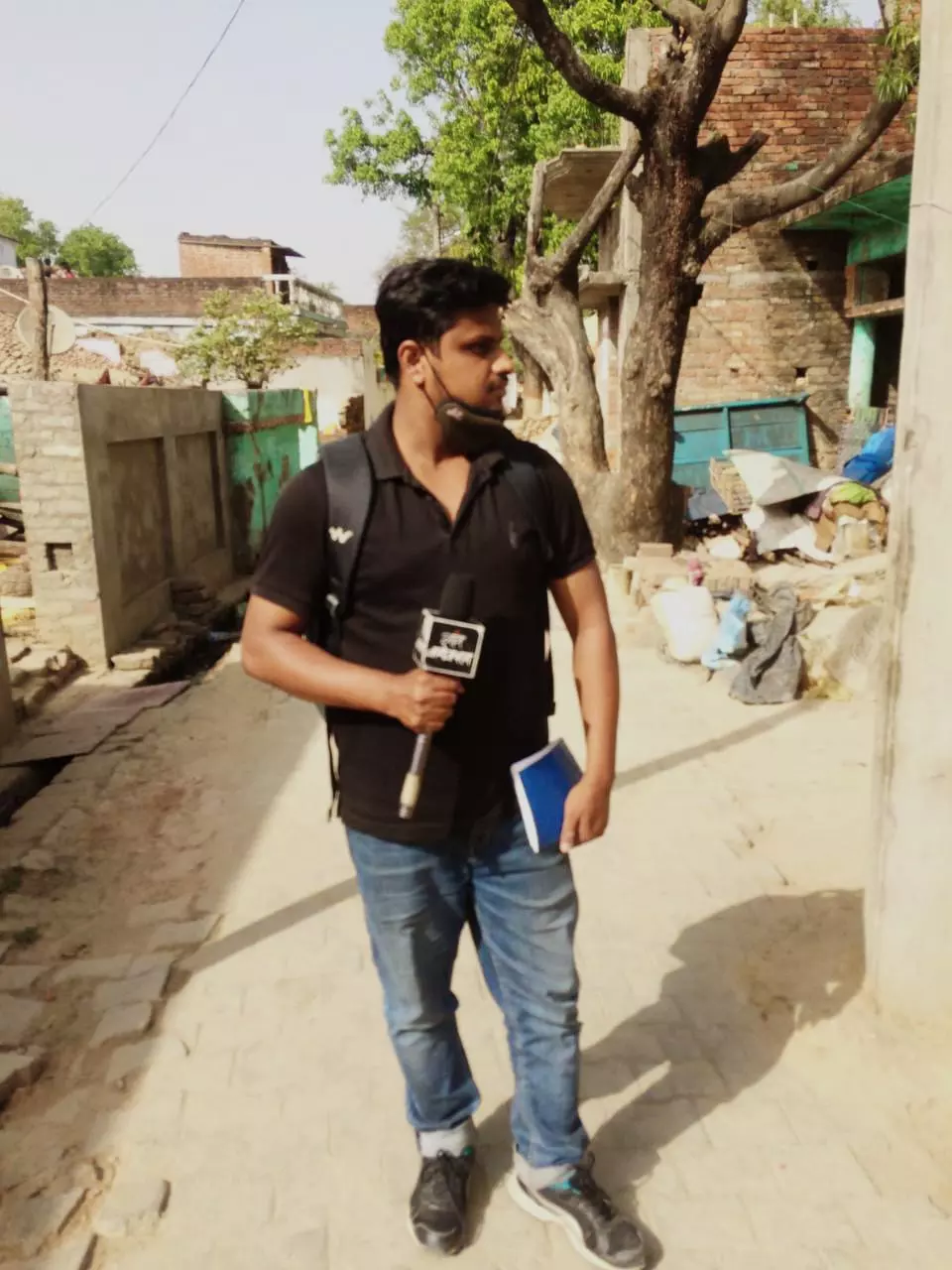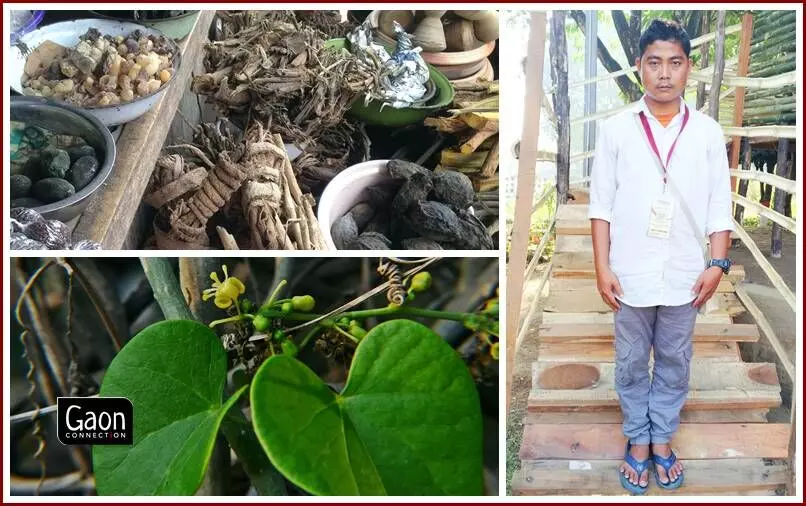A Chakma Youth Is Preserving His Tribe’s Healing Practices and Its Indigenous Language
Chandra Kumar Chakma, the 28-year-old healer from Tripura, has documented over 500 medicinal plants, formulations and healing practices of his tribe and has profiled them in his Chakma language.
 Pratyaksh Srivastava 28 Dec 2023 8:07 AM GMT
Pratyaksh Srivastava 28 Dec 2023 8:07 AM GMT

The Chakma healer said he treated ailments such as gastric issues, piles, eczema, gallbladder problems, jaundice and rheumatoid arthritis through natural remedies.
Jamshedpur, Jharkhand
Chandra Kumar Chakma is amongst a few traditional healers left in Tripura’s Chakma tribe. The 28-year-old who lives in Gayinama village in Dhalai district is on a mission to document the herbs, roots, flowers and a variety of flora that are used in healing practices of the northeastern state.
“I have been compiling the names of medicinal plants and compositions for the last eight years in our Chakma language. So far, I have noted 500 herbs, barks, shrubs, fruits and flowers that are used to treat a host of ailments. I have documented them in our indigenous Chakma language,” Chandra Kumar told Gaon Connection.
He was recently in Jamshedpur, Jharkhand, to attend Samvaad, an annual tribal conclave organised by Tata Steel Foundation. Tribal healers from across the country had assembled there to discuss their unique practices and the need to preserve them.
Also Read: Walking the Healing Path
It was in 2019, through Samvaad, that the Tata Steel Foundation formed a collective called the National Tribal Traditional Healers Association of India. It has members from tribal communities across the country. Chandra Kumar is also a part of this network.
The Chakma youth began his work as a healer when he turned 20. Chakmas are one of the major tribes of Tripura. They are also found in Mizoram and Arunachal Pradesh. According to the Census Report of 2011, Chakma population in Tripura is 79,813. Chakma language has its own script and the language is endangered.
Talking about this journey as a tribal healer, Chandra Kumar said: “I used to accompany my grandfather Krishna Dhan Chakma whenever he went deep inside the forests to collect medicinal plants. Whenever he told me something about them, I took down notes in our language. That is where I got the idea to document all this traditional wisdom in written form.”
“After my grandfather passed away in 2018, I accompanied my father Tathya Ram Chakma into the forests as he foraged for medicinal plants. Both my grandfather and father were tribal healers,” Chandra Kumar said.
The healer said that he now knew enough about the plants to go into the forests alone and collect small quantities of various roots, berries and leaves for his needs.
“I have to source these plants regularly as plants such as hadasibang creeper are not available commercially,” Chandra Kumar said.
“Since we have no written records of our medical system, it is difficult to conserve our heritage. I hope the documentation of medicinal plants in our Chakma language helps in conserving our tribal healing practices and the language also,” he said.
The Chakma healer said he treated ailments such as gastric issues, piles, eczema, gallbladder problems, jaundice and rheumatoid arthritis through natural remedies.
But the future seems bleak. “Our younger generation is showing no interest in traditional medicines or healing, which is a heritage passed down to us from hundreds of years,” he expressed his concerns at Samvaad, where other traditional healers also shared their work, their worries and their challenges.
Also Read: A Road Map for Traditional Healers
At Samvaad, tribal healing practitioners complained that tribal healing and medicines were still dismissed as quackery. There is a growing demand to get tribal healing practices recognised by the Union government just as Ayurveda and Unani systems were.
Even the World Health Organization (WHO) advocates the integration of traditional medicine practices and products into national health systems as long as they meet the standards of quality, safety and efficacy.
According to WHO, around 40 per cent of pharmaceutical products today have a natural product base, and many landmark drugs are derived from traditional medicine. Traditional medicine and traditional knowledge have contributed to breakthrough medical discoveries and there is a long history of herbal medicine being translated into effective treatments for health conditions.
Chandra Kumar acknowledged that there was still a long long way to go before the dream of recognition for tribal medicines, came true.
“Whenever I visit Arunachal Pradesh, Assam and Mizoram to gather plants and herbs, the security forces don’t recognise me as a tribal healer. We have been travelling to far off places in search of herbs for generations but not having an identity card sometimes lands us in trouble,” he said.
Chandra Kumar has an identity card which legally allows him to practise within the Tripura Tribal Areas Autonomous District Council which is in his home district of Dhalai.
“But, I aspire to see the day when our Chakma medicine is legalised across the country,” the young tribal healer said.
#Chakma #TribalMedicines #TribalHerbs
More Stories




